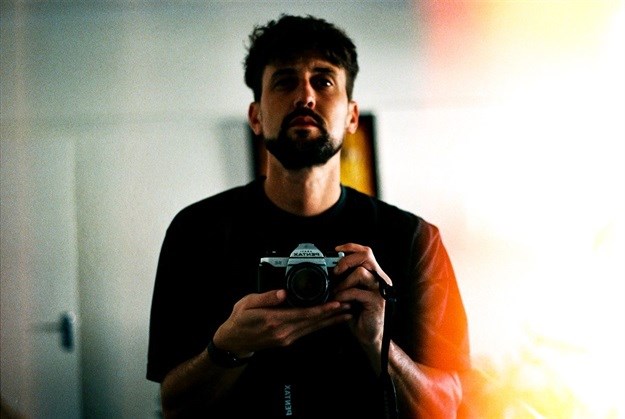#Bookmarks2019: Raising awareness without stepping over into sensationalism

His work on the video took roughly four full days, working 12 to 14 hours a day, trying to get everything plotted and correct. Molyneaux explains:
Accuracy was a strong focus. The narration was key as it needed to feel like a friend telling the audience the story. It came more naturally after tightening the script – sounding good, in my opinion.Here, Molyneaux explains why his Bookmarks win for this work was bittersweet, his process in putting the reconstruction video together and the personal attributes and technical skill required to sensitively put together in-depth hard news reconstruction-style multimedia content…Once I told my editor, Amanda Moore, that the video was complete and that it was nine minutes in length, she almost tore her hair out. But I trusted the strength of the piece. She watched the video, came back and said, ‘We can run with the nine minutes’. It was a sign that in a digital world where anything above a minute-and-30-seconds is considered a no-no, to run with a nine-minute piece was hugely significant.
 This is understandably a bittersweet win. What does this specific accolade mean for your career?
This is understandably a bittersweet win. What does this specific accolade mean for your career?
It was a bittersweet award, but I’ve decided to look at the accolade as a way to draw more attention to Hannah Cornelius’ case and the senseless crimes that happen in South Africa.
This win has highlighted how important it is to evolve our storytelling methods in journalism. In terms of my career, it shows that longer-form video and strong storytelling can be successful in a digital world and that we can bring something new and professional to the digital storytelling medium.
The whole reason I did the piece was to get people's attention to the case because I felt there was not enough attention on her murder and the people behind it. Winning an award for it means that more people are aware of it.
 Definitely. Let’s rewind – talk us through how you got involved in working on the reconstruction video.
Definitely. Let’s rewind – talk us through how you got involved in working on the reconstruction video.
I picked up on Hannah’s case as it happened. It was a shocking event:
A 20-year old student and her friend were kidnapped in Stellenbosch, a popular university town. One was severely assaulted and left for dead. The other was found murdered in a field. It was harrowing. I drove out to Stellenbosch the day after the story broke and began to investigate what happened, trying to understand how something like this could take place in a supposedly safe town.I filmed a few places relevant to the case after finding more information, but that was only the beginning. I continued to follow the case closely as it hit home for me, and I wanted people to understand what had happened to this innocent young girl and her friend.
Fast-forward a year later and the case was in full swing, yet it felt like the public had lost interest at this point: crime is something we as South Africans are constantly inundated with. This story deserved more attention for so many reasons, the main reason being Hannah.
Everyone I interviewed and everything I could find out about her was so positive. For example, on her birthdays she would go out to Ocean View – a struggling area – and hand out gift-packs to the less fortunate. She was a really special person who ended up in the wrong place, at the wrong time, at the hands of the wrong people.
To draw more attention to the case, something new needed to be done. Since first hearing of Hannah’s death, there was a curiosity about where and how the events took place.
So when CCTV footage of the kidnapping, as well as footage of the suspects attempting to draw money from various petrol station ATMs, was shown in court, it was possible to finally piece together what most likely happened in those 10 hours between the initial kidnapping and the suspects being arrested.
By plotting events on Google Maps, I was trying to make sense of where the suspects went before and after they were captured on CCTV footage. Through their confessions, which all varied in some way, it was possible to confirm some things and rule others out about the journey.
 What does it take to sensitively put together in-depth, hard news reconstruction-style video like this? List the personal attributes and technical skill.
What does it take to sensitively put together in-depth, hard news reconstruction-style video like this? List the personal attributes and technical skill.
The first thing is having respect for the case and for the victims. Eagerness to really understand what happened will help you to tell a powerful story.
An investigative mind, strong writing skills for narration, experience with Google Earth, and expertise on editing software are essential. You also require access to the court documents and footage – which can be quite difficult to access – but if you persist in what you want, you can usually find a way to get it.
 How did you know you were ‘done’ with the work? What was the end goal you had in mind?
How did you know you were ‘done’ with the work? What was the end goal you had in mind?
It was after four intense days, feeling burnt out and still receiving feedback from my editors to make certain style changes, but not editorially. I was so tired and to be honest, I would have loved a graphics artist to help with the mapping and the titling, but we just didn’t have the time for that.
It needed to be published as soon as possible after the CCTV footage was released in court.
 That makes the end result all the more impressive. What specific obstacles did you have to keep in mind, in working to raise awareness of the case without stepping over into sensationalism?
That makes the end result all the more impressive. What specific obstacles did you have to keep in mind, in working to raise awareness of the case without stepping over into sensationalism?
It’s important to be respectful, particularly when reporting on crime, and not to include unnecessary details that won’t bring anything new to the reader or viewer. My dad is a lawyer, so I understand the inner workings of what can and cannot be released legally. Fortunately, I also work for a great company and there was a lot of communication regarding the piece.
The end product was well received, especially by the Cornelius family – sign that the case was handled in a respectful, honest manner. It also assisted Hannah’s cousin in raising more than R50,000 to pay for a hearing-aid and further studies for Hannah’s friend Cheslin Marsh, who survived the attack. This is where raising awareness can really deliver positive change.
That’s what effective investigative journalism is all about. Follow Molyneaux,as well as Tiso Blackstar Group’s Sunday Times and Times Live on Twitter for the latest updates. Also, click through to our IAB Bookmarks Awards and Summit special section on site for continued coverage of this year’s winning work.











































